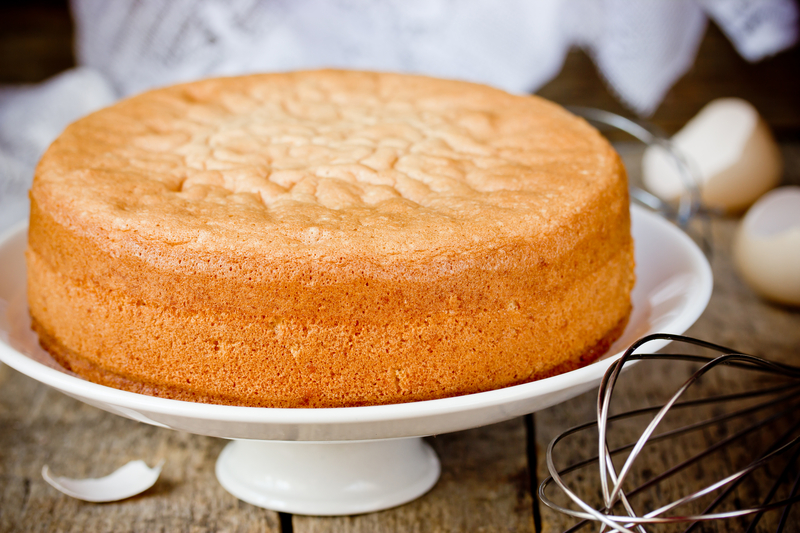
Baking is often considered a science, and achieving the perfect balance of ingredients is crucial for creating delectable treats.
Among the many factors that contribute to a successful cake, the ratio of flour to sugar plays a pivotal role.
Finding the right balance between these two ingredients can make the difference between a moist and flavorful cake and one that falls short of expectations.
The Science Behind the Ratio
The flour-to-sugar ratio in cakes transcends taste, exerting a profound influence on texture, structure, and overall quality.
Flour serves as the architectural cornerstone, imparting stability and structure to the cake.
In contrast, sugar plays a multifaceted role, infusing sweetness, moisture, and tenderness.
Achieving equilibrium between these ingredients is paramount, ensuring the cake attains the coveted texture, avoiding excessive sweetness while fostering a nuanced flavor profile.
This delicate balance is the linchpin for bakers seeking to craft a confection that not only satisfies the palate but also showcases a meticulous interplay of ingredients.
The symbiotic relationship between flour and sugar elevates baking from a mere culinary pursuit to a scientific art, where precision in ratios becomes the key to unlocking a world of delectable possibilities.
In the realm of cakes, the flour-to-sugar ratio is the alchemical formula that transforms humble ingredients into a symphony of taste and texture.
Balancing Act
 The perfect flour-to-sugar ratio is a dynamic element, subject to the nuances of cake type and individual taste preferences.
The perfect flour-to-sugar ratio is a dynamic element, subject to the nuances of cake type and individual taste preferences.
While the ratio can fluctuate, a widespread starting point in many cake recipes is a 2:1 ratio, featuring twice as much flour as sugar.
This foundational proportion establishes the groundwork for classic cake recipes, crafting a cake with impeccable structure and a harmonious sweetness.
For instance, in a recipe demanding 2 cups of flour, it harmoniously aligns with around 1 cup of sugar.
This equilibrium ensures that the flour undertakes its crucial role in providing structural integrity to the cake, while the sugar delicately imparts sweetness, harmonizing with other flavors without overshadowing them.
This meticulous balance is not just a guideline; it’s a culinary compass navigating bakers through the intricate terrain of creating a cake that marries texture and taste flawlessly.
The 2:1 ratio is more than a numerical guideline; it’s the alchemy that transforms a simple mixture of ingredients into a culinary masterpiece.
Considerations for Different Cake Types
While the 2:1 flour-to-sugar ratio provides a reliable launchpad, the intricacies of cake crafting demand an understanding of each cake type’s unique characteristics.
For the ethereal lightness of sponge or chiffon cakes, deviations from the standard ratio are not only permissible but encouraged.
Adjusting the ratio to include a bit more sugar can be a stroke of genius, injecting these delicate confections with a sweetness that complements their airy textures, resulting in a heightened culinary experience.
Conversely, when it comes to the realm of dense and opulent pound cakes, a nuanced approach beckons. Here, a slightly elevated ratio of flour becomes the secret ingredient, imparting a robust structure that befits the cake’s substantial nature.
This tailored adjustment ensures that each slice maintains a satisfying firmness without compromising on the delightful richness that defines pound cakes.
In the world of baking, understanding and customizing the flour-to-sugar ratio unveils a spectrum of possibilities, allowing for the creation of cakes that transcend the ordinary, embracing the diverse tapestry of flavors and textures that define this culinary art.
Experimenting with Ratios

Baking, as an art form, is inherently beautiful in its flexibility, granting bakers the creative license to experiment and customize recipes to align with their individual preferences.
As you progress in your baking journey, the invitation to tweak the flour-to-sugar ratio in your favorite recipes becomes a canvas for culinary expression.
Fearlessly embark on this journey of exploration, as each adjustment has the potential to shape the very essence of your baked creations.
The seasoned baker is urged not only to modify but to meticulously document these variations.
Keep a culinary journal, a treasure trove of insights, detailing the alterations made and keenly observe their transformative effects on both texture and flavor.
This meticulous record-keeping becomes the key to unlocking the alchemy of your own baking prowess.
Through these experiments, a baker uncovers the subtleties of the flour-to-sugar ratio, ultimately unveiling the bespoke balance that harmonizes with their unique baking style.
Embrace the beauty of uncertainty and revel in the joy of discovery, for it is through such fearless experimentation that the true magic of baking unfurls its wings.
The Role of Other Ingredients
In cake baking, the flour-to-sugar ratio is just one piece of the puzzle.
Other ingredients play vital roles in shaping the final product.
Fats, like butter or oil, add moisture and richness to the cake.
Eggs provide structure and stability while contributing to a tender crumb.
Leavening agents, such as baking powder or baking soda, create the cake’s rise.
Liquids, like milk or buttermilk, add moisture and help bind everything together.
Flavorings, such as vanilla extract or citrus zest, enhance the cake’s taste.
Understanding how these ingredients interact and complement each other is essential for creating a delectable and well-balanced cake.
Bottom Line – What is the Ratio of Flour to Sugar in Cakes?
 Achieving the ideal flour-to-sugar ratio in cakes is a key aspect of successful baking.
Achieving the ideal flour-to-sugar ratio in cakes is a key aspect of successful baking.
Understanding the science behind this ratio empowers bakers to create cakes that are not only visually appealing but also boast a perfect texture and flavor.
While general guidelines provide a starting point, don’t be afraid to experiment and tailor recipes to suit your taste preferences.
The quest for the perfect ratio is a journey that allows you to hone your baking skills and delight in the artistry of creating delicious, homemade cakes.


